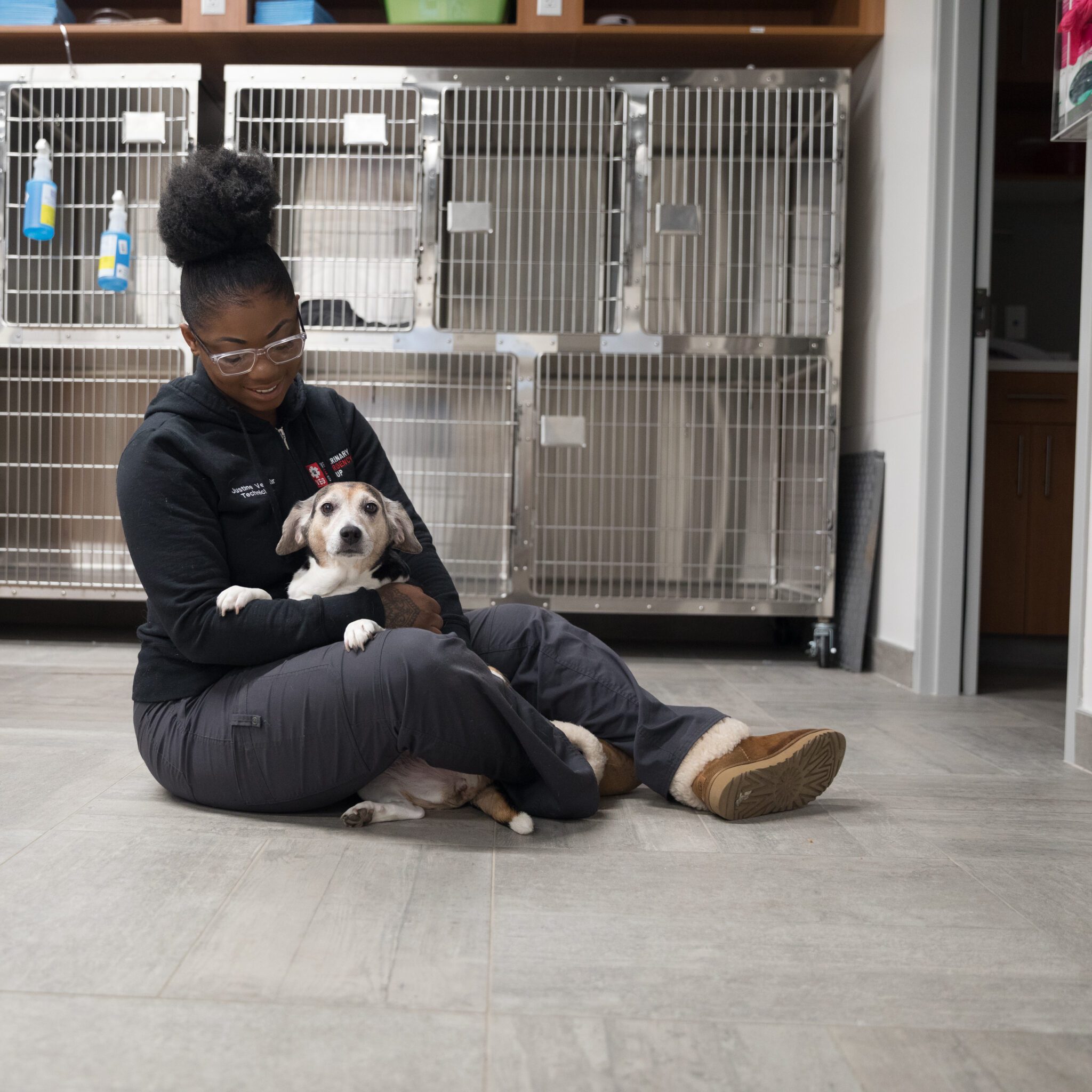
Dogs Paralysis: Symptoms, Causes and Treatment
Dr. Annie Kwok
Call & Speak with a doctor Open 24/7, Even Holidays!
Walk in today for:
Emergencies
Point-of-Care Ultrasound
Urgent Care
X-Rays
Diagnostics + Testing
End-of-Life Care
Surgery
Treatment + Hospitalization
Is your dog showing signs of paralysis? What does this mean? What should you do if your pet seems to be partially or fully paralyzed?
Paralysis is a scary symptom in a pet. If your dog is experiencing sudden onset paralysis, especially if you’re unsure what could be causing it, see an emergency vet right away. However, if you’re looking for information to prepare yourself for the possibility of this problem, then be sure to read on and find out more about the symptoms, causes, and treatment of paralysis in dogs.
Symptoms
Listed below are symptoms to look out for:
Full or Partial Inability to Move Legs
If your dog is not able to move any of her legs, or if she cannot move at least one of them, she may be experiencing full or partial paralysis.
Inability to Urinate
Dogs who are paralyzed may have difficulty urinating. This is because they cannot squat or lift a leg to urinate, which makes it uncomfortable for them to try. They may also have little to no bladder control, depending on the type and cause of the paralysis.
Incontinence
Incontinence may occur in dogs with full or partial paralysis. Dogs may be unable to hold their urine and may dribble as they walk. They may be unable to hold their feces as well, or conversely, they may become constipated instead.
Dragging Back Legs
Dragging the back legs is a serious sign of aortic embolus. Although this is more common in cats than in dogs, it can still happen to dogs in very rare situations. This type of blood clot can quickly become fatal if left untreated.
Causes
The main causes of this condition are listed below:
Spinal Injury
Any type of injury or degenerative condition that affects the spine can lead to paralysis. Dogs with sudden, acute injuries may experience sudden onset paralysis. On the other hand, dogs with chronic spinal issues may have paralysis that progressively worsens.
Cancer
Cancer of the brain or spinal cord can often contribute to a loss of motor skills in dogs. Sometimes, this can present itself as a lack of ability to move one or more of the legs. Many dogs with brain tumors will show a variety of other symptoms too, including confusion and seizures.
Blood Clot
A clot in one of the major blood vessels, such as an aortic thromboembolism, can reduce blood flow to limbs and organs. Dogs with clots can have progressive loss of control over their back legs. Their back legs may feel painful and cold to the touch.
Treatment
The main treatment methods are listed below:
Pain Medication
Perhaps the most common treatment for partial paralysis in dogs is pain medication. Your dog may be given pain medication to help them feel more comfortable, whether their paralysis is caused by a temporary or acute problem.
Surgery
Surgery can be performed to correct some types of spinal injuries. Brain or spinal cord tumors may sometimes respond well to surgery, but this is not always the case.
Physical Therapy
Physical therapy can be performed for most underlying causes of paralysis after mainstay treatment. If your dog’s paralysis comes from a spinal injury or a brain tumor, physical therapy may work well for them.
Contact VEG if Your Dog has Paralysis
If your dog is exhibiting any of the symptoms of paralysis listed above, or if you think she is at risk based on the causes of paralysis outlined int his article, then be sure to take her to the emergency vet right away. And of course, if she has a long-term, chronic health problem contributing to her paralysis, keep up with regular vet checkups and appointments, too.
Talk to your vet if you have any further questions or concerns about your dog’s health, wellness, and overall physical needs. Your vet can help you make the right treatment and management decisions for your individual pet.
For more information on this condition, contact VEG by calling one of our locations. We have locations all over the country that are open 24 hours, including weekends and holidays. We understand how serious dog paralysis is, and we’ll help get to the bottom of what’s causing it to be able to provide the best treatment option.

